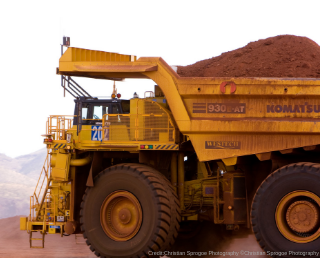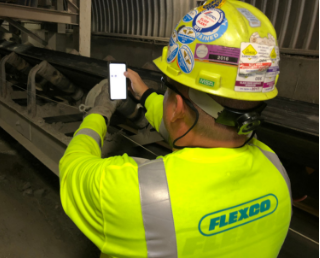Flexco From 10 Years Ago to Now: An Inside View From Our Executive Vice President and Chief Operating Officer
The world is moving at a faster pace than ever before.
Ten years ago, we would never have dreamed of using our mobile device to order a stranger to drive us to our destination, and now Uber has become part of our normal experience. No one knew what Instagram was, but since then people have uploaded over 40 billion photos to the platform. “There’s an app for that!” is a common phrase today, but 10 years ago, apps were only just beginning.
Over the last 26 years that I have been at Flexco, I’ve watched our industries transform, seen new technology evolve into critical business elements, and watched our customers’ needs and priorities move in new directions. And believe me when I say I’m excited about what the next 10 years and beyond holds.
The world moves fast all right, and Flexco is no exception. Here are some key changes that have captured my attention from 10 years ago to now.
 Emphasis on productivity
Emphasis on productivity
Flexco operates within an variety of industries, including, but not limited to, cement, aggregate, coal, copper, iron ore, airports, parcel handling, agriculture, food processing, and more. Over the last 10 years, I’ve watched these industries transform from a focus on reaching maximum production levels to a focus on increasing productivity. Productivity is one of the biggest opportunities company leaders have today to grow their profitability, so it is no surprise to see this transformation high on the agenda.
An example of this is seen in mining, where real-time data and analytics are making scheduling and processing capabilities more precise than ever. Miners can now optimize material and equipment flow for maximum efficiency. Driverless trucks are becoming more common. For instance, at Rio Tinto’s iron-ore mines in Australia, trucks operate 24 hours a day and are overseen by a team over 750 miles (1200 kilometers) away at their centralized control center.
Industrial automation has become a key element in the movement toward increasing productivity. Many companies across the world are racing to invent and adopt the latest automation technologies to modernize their operations.
Automated label applications and barcode readers, for example, are transforming parcel handing facilities as they respond rapidly to the growth in e-commerce – a factor that has fundamentally impacted the industry. It means distribution centers can handle more parcels, faster than ever before, and that’s only likely to increase.
Digital technology and data
 There have been three major technological developments that changed the way businesses operate: the internet, big data, and smartphones. Even compared to 10 years ago, many more people have access to smartphones, or even technology in general and networks are broader and faster to accommodate.
There have been three major technological developments that changed the way businesses operate: the internet, big data, and smartphones. Even compared to 10 years ago, many more people have access to smartphones, or even technology in general and networks are broader and faster to accommodate.
The emergence of the digital age has been a game changer for businesses. Smartphones and tablets have made it even easier to access information and communicate. People can get their questions answered in an instant online, on the go. Ten years ago, the iPad didn’t even exist!
All this online activity is stored as digital information. And with so much data, I’ve seen an increased focus on digital insights. Machine learning and artificial intelligence are driving business decisions across all functions. Implementing technology that can track, measure, and respond to key shifts in consumer behavior, or provide greater levels of efficiency, is the foundation of success in today’s world.
Businesses across all industries are also embracing data-feeding predictive analytics, which focuses on learning past behaviors to predict future behaviors. The key is to analyze business data, identify where it can be most useful, and use it for competitive advantage. The possibilities are endless and include improved efficiency, smarter collaboration, business intelligence, safety, and security.
I’ve seen a sharp increase in the attention our customers are paying to these technologies, and at Flexco, we are paying attention too. For example, we transformed the manual process of conducting a belt conveyor system assessment into a specially-designed app for smartphones and tablets. This blog post talks about that in more detail, including how it’s helping our customers and partners around the world increase the productivity of their conveyor systems and gain important insights about their systems from the collection of assessment data that they didn’t have access to before.
The digital natives
Speaking of the digital world, millennials are big news – and with good reason. Millennials account for about a quarter of the entire world’s population, and by 2020 they are forecasted to make up 35 percent of the global workforce. Millennials are the first generation in history who have grown up totally immersed in a world of digital technology, it’s shaped their culture and their attitudes. Without a doubt, they have embraced technology like no other generation. They are the digital natives.
Digital natives are tech-savvy because it has always been part of their lives. But because they rely on the ability to access information at all times, digital natives are accustomed to an on-demand lifestyle. This translates to how I’ve seen businesses transform over the last 10 years.
Social media, for instance, has been one of the fastest growing trends over the past decade, one that Flexco has embraced. It allows our customers to contact and engage with us in the online world at any time, and no matter where they are located around the globe.
The next 10
What shifts will we see in the future of Flexco?
Firstly, we’re devoted to continuous improvement. We are using data collected from Gemba (where work is done) to make faster and more contemporaneous decisions and adjustments, in the development of our great people, and in improving our overall performance.
We're leveraging technology and networks that enable us to share information, experiences, and learning across business functions and with our customers. It’s helping us to move quickly and effectively, to optimize our processes, and to improve the customer experience. And with data capabilities constantly increasing in sophistication comes a move towards greater transparency of data and results.
With our customers’ needs moving toward a reliance on application expertise, we are leveraging our 110+ years of experience in conveyor systems and deploying our entire organization to continue to build our reputation as conveyor productivity experts who are hands-on, consultative, genuine, dependable, and easy to do business with.
Likewise, over the next 10 years, those digital natives I talked about earlier will start to fill key positions and take on more decision-making roles. And with their comfort using and leveraging digital technology, this will have a remarkable impact on the business landscape.
The formula for the future
That’s my take on how Flexco, our customers, our markets, and industries have changed over the last 10 years. The ability to continually evolve, move ahead, help customers achieve their productivity goals, learn from failures, and embrace technology is critical for success.
We are living in an extremely exciting time in terms of data and technology. And while we’ve seen many breakthrough inventions over the last decade, I truly think the next 10 years will bring incredible innovation, new technology, and tools that enable greater productivity, and a new generation of advanced and talented workers. I’m excited about what the next decade and beyond holds for Flexco.
Authored by: Thomas S. Wujek, Executive Vice President and Chief Operation Officer
Wujek has been with Flexco since 1992 and has worked in operations management, product development, quality assurance, field sales, and sales management prior to his appointment to Executive Vice President and COO in 2004. He holds a bachelor’s degree in Mechanical Engineering from the University of Illinois and a master’s degree from the Kellogg School of Management at Northwestern University. Wujek is active in the National Industrial Belting Association (NIBA), serving as president in 2014, as well as the Power Transmission Distributors Association (PTDA) and the National Mining Association (NMA). Wujek is also passionate about Bridge Communities transitional housing program, Hesed House, a local homeless shelter, and grassroots outreach activities in Africa.
Subscribe to the Flexco Blog
Related Blogs
Published Date
December 10, 2018Issues
- Downtime
- Maintenance